MUSINGS ON AWARENESS – 10
By Prof. G. Venkataraman
This series is based on the Awareness Course that is incorporated at the post-graduate level programs of the Sri Sathya Sai University. Its author is the Sri Sathya Sai University’s former Vice-Chancellor Professor G. Venkataraman who has been closely connected with the formulation, content and delivery of this program for more than a decade now. The series was first broadcast over Radio Sai in response to requests from many listeners seeking clarifications on many spiritual dilemmas faced in daily life. Therefore, it was presented in a simple format suited for anyone who wishes to live life in a state of Awareness as prescribed by the Supreme Teacher Bhagavan Sri Sathya Sai Baba.
In the present article, the last radio talk in this series has been adapted appropriately and supplemented with apt illustrations for ease of understanding.
If we look back at human history, we find that it is basically driven by two opposing factors. On the one hand, humans have tended to come together, co-operate, and grow as well as benefit through this co-operation. At the same time, they have also tended to seek and stress differences between themselves, arousing in the process, the darker emotions.
This in turn has led to conflict and often wars, some of which have been pretty disastrous. There is some kind of an oscillation between these two fundamental tendencies latent within. As someone said, human beings seem to hover between cooperation and conflict.
Inner Rage Manifests as External Conflicts
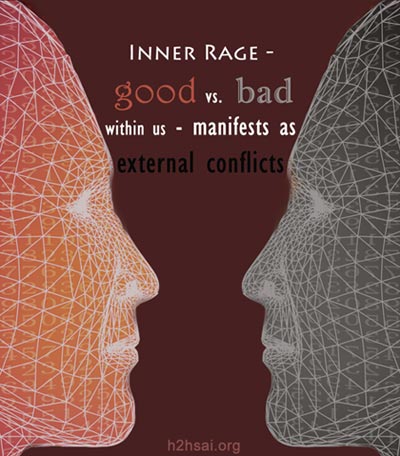 |
This oscillation is not at all surprising, being a reflection of the inner conflict that rages non-stop in every individual, between the good and the bad, both latent in us. It is this internal and on-going conflict that manifests in the external world as all kinds of problems, of which we seem to have far more today than we can handle.
Moving Beyond Band-Aid Solutions
If we really want to solve the massive problems facing humanity today, we have to go first to the very roots and NOT merely tinker with the problems via world bodies, think tanks and such extraneous bodies, which is what the world is largely doing today.
This discussion is an analysis of the futility of the current so-called secular approaches, and the correct alternative to it all, which, obviously is the timeless wisdom Krishna offered in the Gita and which Swami is now repeating all over again, through His life as well as His discourses. These tried, tested and true tenets lay down a way of life which is above any dogma or religion or restrictive belief system.
Reith Lectures
Recently, Prof. Jeffrey Sachs of Columbia University delivered the very prestigious series of lectures called the Reith Lectures. Named after Lord Reith who was long ago associated with the BBC and responsible for giving it shape as well as its character, the Reith Lectures are famous in intellectual circles, and it is considered a great honour to be invited to deliver them. They are delivered before a distinguished audience and also simultaneously broadcast by the BBC. In 2007, Prof. Sachs gave five lectures. While the first one was in London, the second was in Peking University in Beijing, the third in Columbia University, New York, the fourth back in London and the last one was in Edinburgh.
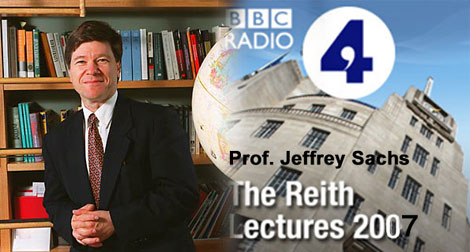 |
The BBC planners chose these different venues to align the theme of that particular lecture to the local ambience; for example, Scotland was the venue of the last lecture because that is where Adam Smith, the father of modern economic theory, wrote his famous classic, the Wealth of Nations. These lectures delivered by Prof. Sachs warrant some prominence and discussion because through them he has captured very precisely the core of today’s problems.
Prof. Sach’s Reith Lectures
Professor Sachs says that reduced to simple terms, the three basic problems we face today are:
1) Threat of increased conflict and indeed large scale war
2) Threat of climate change, enhanced particularly by man’s reckless consumption and pollution in recent years
3) Massive poverty
In a sense, all these three issues are interconnected. The issue of war and poverty are certainly not new; man-made climate change, on the other hand, is definitely a new item on the menu. All these have been vastly influenced by two important developments that have taken place since the eighties of the twentieth century. They are:
¤ Information Revolution
¤ Globalisation
Compounding Humanity’s Problems
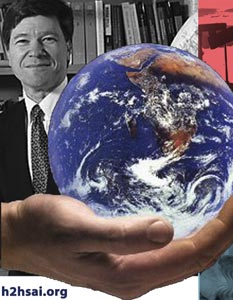 |
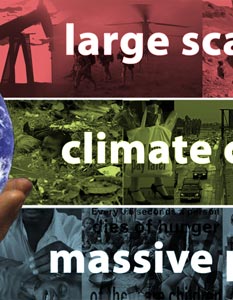 |
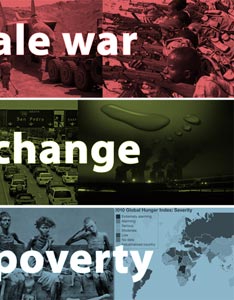 |
Science and technology have always influenced human society, right from the time man learnt to use fire, invented the wheel, and made boats to sail on water. However, the first real, accelerated push and massive impact was felt only after the onset of the Industrial Revolution in the early part of the nineteenth century. It took about a hundred and fifty years to move forward from the time the steam engine appeared to the time when jet travel became a regular affair. And then, around the early eighties, there appeared the integrated chip, a successor of the transistor that made its entry soon after World War II. The silicon chip was nothing but a lot of transistors put together on one silicon chip and interconnected to shrink electronic circuitry. In a few short years, the chip literally revolutionised the way we live. Without the chip, we would not have laptops, the internet, digital cameras, mobile phones… everything that seems as indispensible for modern existence.
The Marvels of the Microchip
When it appeared, the microprocessor, which is nothing but an entire computing engine made up of millions of transistors all on a single chip, was quite modest in its capabilities. Today, its power is awesome.
I still recall the first digital computer I ever saw in 1955. It was the TIFRAC built at the Tata Institute of Fundamental Research (TIFR). TIFR was founded by late Dr. Homi Bhabha, a brilliant and visionary scientist of India who launched this country into the atomic age.
 |
 |
 |
The computer TIFRAC filled the larger part of a room about fifteen metres long and ten metres broad. It was built with vacuum tubes – the transistor was still largely a laboratory curiosity at that time – and the TIFRAC literally drank power, consuming several kilowatts of energy. At that time, it was a wonder, but by today’s standard, its computing capacity was far less than old and outdated laptops of present times. The world’s most powerful computer today is billions of time as powerful as the TIFRAC ever was, but it does not drink billions of times more power nor occupy billions of times more space. Indeed, the way computing power has galloped since 1980 is absolutely mind boggling, and that is what the microprocessor revolution has achieved.
Supercomputer Designed by the Divine
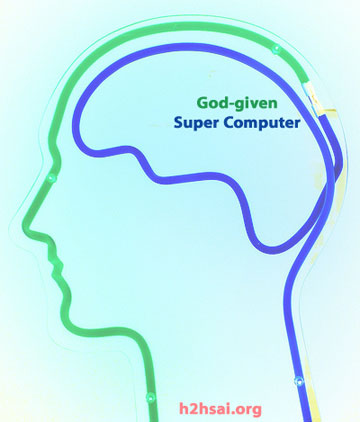 |
Interestingly, thanks to God, each one of us carries within us a computer that is incredibly more versatile compared to the greatest super computer on earth. It weighs but two kilos, occupies just a portion of our head and consumes not more than a few watts of power. That is the glory of God but how often do we wonder about that? How often do we realise that the man-made supercomputer was designed by the “computer” that God put in the human head? Yet, does man ever pause to reflect on that? Indeed, it is precisely this forgetfulness on the part of man that is responsible for the huge mess humanity now finds itself in.
Social Change Accelerated by Information Revolution
To get on with our story, Information Revolution is bringing about changes in society at about ten times the speed at which changes occurred after the Industrial Revolution, and that is what is complicating the situation hugely.
Information and Globalisation – Partners in Chaos
Let me now turn to the other factor, namely globalisation. Many seem to think that globalisation is an utterly new phenomenon. My own view is that globalisation is actually old hat, but what is new and stunning is its new avatar.
History Replete with Instances of Globalisation
Looking back in history, centuries ago, Alexander came all the way from Greece to India, spreading European influence wherever he went. Likewise, the Romans spread their influence all over Europe. While the Greeks and the Romans used the sword to spread their influence and interconnect people scattered in different regions through trade and cultural exchange perhaps, religion too did its own bit to promote globalisation.
 |
Thus, for example, Buddhism spread from India to all over the Far East. It is in this sense that linkages between people across the globe go back to a long time. That said, it must be admitted, that the manner in which these linkages have occurred and the influence they have exerted on Society has been different in different eras. Thus, the colonial era brought its own version through conquest, empires, slave trade and what not. When the railways and steam ship came, they further accelerated the linkages between continents and people.
Thus, for example, Indian labour was taken by the British to work in Africa, West Indies and even Fiji; which is why there are nearly twenty two million people of Indian origin all over the world. Similarly, there are millions of black people on the American continent whose ancestors all came from Africa as slaves.
The question arises if all this is true, then why the big fuss now about globalisation? What is so new about it?
What is new about it is the way it is producing changes and the speed with which these changes are being effected; and that is entirely due to the Information Revolution. As one expert put it, Information Revolution and Globalisation – in its current avatar that is – are two mighty forces that have rushed into each other’s arms as it were, rather like two great rivers rushing to merge into one mighty river. In other words, if the Information Revolution has spurred Globalisation, the latter has, in its own way, spurred the further growth of the Information Revolution.
As an example, just reflect on the incredible changes one sees in Bangalore in the last twenty years. Many overseas devotees who for years have been coming to Puttaparthi via Bangalore would immediately recognise what I am talking about. In 1980, Bangalore airport was almost a rural affair, with barely half a dozen flights per day operating out of it. Today, there is a world class airport with regular international flights from Bangalore to the Gulf, to Bangkok, to Frankfurt, Paris and London. Not just that; I am prepared to bet that in the field of Information Technology, Bangalore is better known in the Silicon Valley than say Milan. We have in Bangalore big research centres operated by Texas Instruments, IBM, Microsoft, INTEL, Motorola, etc. What more do you want by way of evidence for the incredible changes that Globalisation and the Information Revolution have brought about?
What is Spiritual about Globalisation and Information Revolution?
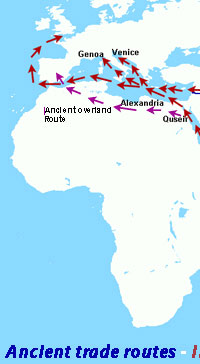 |
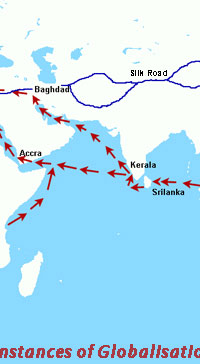 |
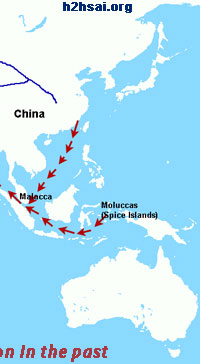 |
Are we wandering too far off from Swami’s teachings and getting stuck in the illusory world? By no means! Let’s go back to Professor Sachs and his Reith Memorial Lectures.
In Prof. Sachs’ view, mankind is currently bursting at the seams as a result of rapid growth of population, and a lot of related socio-economic factors. In practical terms, mankind faces three principles dangers:
-
Danger of extended and extensive conflicts, leading may be even to war
-
The threat of man made climate change
-
And the threat of massive poverty
Give Peace a Chance
 |
Sachs not only discusses why and how these dangers have arisen but also how we might face and eliminate them, saving both the humanity as well as the planet on which we all live. In a nutshell, Sachs says we must shed prejudice, and learn to share, care and reach out across all barriers that now spilt us into different vested-interest groups based on race, religion, sect, language, etc. All solutions, whatever they be, must be rooted in peace; in other words, mankind must give peace a serious chance; otherwise, we are all doomed – that in brief is what Sachs says.
I know I have oversimplified a lot and not done proper justice to Prof. Sachs and his masterly presentation. At the same time, I have the strong feeling that Prof. Sachs, and indeed many others like him who are equally concerned and worried about our collective fate, falter, when it comes to a REAL blueprint for solving these mighty problems. According to me, this precisely is where Swami’s universally applicable and acceptable teachings assume enormous importance; and that shall be the theme of the rest of this analysis.
Interplay of Opposing Forces
The world, and indeed the Universe, is controlled by the forces that operate within it. According to me, the problems that Prof. Sachs talks about, namely the crisis facing humanity and the fate that might overtake our planet are dominated by the following forces:
-
Geo-political forces
-
Ecological forces
-
The power of money and the related market forces
-
The force of mass frustration that mass poverty can release
Humanity and the planet are like a football that is kicked around by these forces and the question is how to save humanity as also our planet – that is the issue that Prof. Sachs as well as many others like him are trying to address these days. I should make it clear that it is not only academics and liberals who are thus preoccupied. Many politicians too, when they get the time, worry about such matters. One must give credit to Tony Blair for doing a lot to focus attention on the poverty in Africa.
Similarly, President Bill Clinton has, in his own way, been actively engaged in finding practical solutions to many of today’s problems. Nelson Mandela too, though pretty old, is as vigorous as ever in advocating the path of peace and reconciliation in solving the problems of conflict. I should not forget Prime Minister Manmohan Singh of India who, in his own gentle and soft way, has been expressing deep concern about the poor in India, several hundred millions of them, for whom the idea that India is shining and about to become an economic giant seems like a cruel joke.
 |
 |
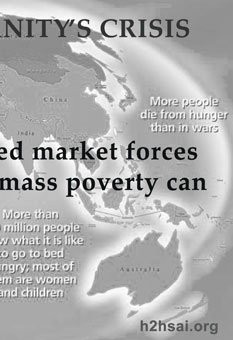 |
Good Intentions Ignore Root of Malaise
However, in almost all these cases, there appears to be something missing in what these people say, when it comes to solutions. No doubt, implicitly they all base their own brand of solutions on basic human goodness; at the same time, they do not seem to stress it enough, much less make it the anchor. That is where Swami’s teachings are not only different but also acquire special meaning and of course relevance.
Overcoming the Great Divide with Inner Goodness
If one studies the speeches of Professor Sachs carefully, one would find that he implicitly hopes that the basic human goodness that is latent in each and everyone of us, would somehow come to the fore to help individuals to overcome their personal prejudices that tend to divide, promote differences, and even lead to conflict, terrorism, and who knows, even war. Professor Sachs also implicitly hopes that the latent goodness in individuals would not only surface but also get strongly interconnected, so that there is a multiplier effect that renders this force of goodness to be a strong, collective, and positive factor. It is this multiplied and enhanced positive force that is expected to counter the four negative forces we listed earlier, and produce solutions. Prof. Sachs does not quite put it the way I have done, but that is how I read his analysis and message.
In my view, Professor Sachs is almost there but does not cover the last mile. Yet, the last mile is so very important that I would like to focus mainly on that; without that last mile, all is likely to be lost and that is the great danger we are facing today.
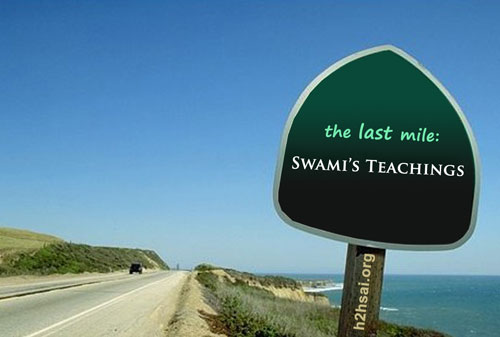 |
Recapitulating the Dilemma of Humanity
Prof. Sachs, who is typical of many who are deeply concerned by today’s crisis, is of the view that humanity is virtually bursting at the seams, and facing many grave problems. These problems are not beyond solution; at the same time, they are by no means easy to solve. Prof. Sachs is of the opinion that given co-operation, patience and a strong commitment to a peaceful rather than a confrontational approach for solving the problems, we can get there. Of course, there were many sceptics in Professor Sachs’ audience who did not quite agree with him. At the same time, none of those who expressed doubts concerning the Sachs-formula could offer a viable alternative.
Analysis-Paralysis Unable to Address Root of Problem
What it all means is that while people are good at diagnosing the existence of problems and also the cause for them, to a certain extent, that is, when it comes to solutions, they invariably falter. That is because all of them, either consciously or sub-consciously, avoid going to the root of the problem.
Professor Sachs, for example says there is no alternative to co-operation and a peaceful approach; but how to create a climate for such an approach? That he does not discuss; it would appear that according to him, the sheer gravity of the situation would compel people to set aside their differences, start co-operating and work together. I venture to suggest that this is a half-hearted approach that would not deliver the goods. Instead, the real way to look for solutions is via Swami’s teachings.
Gravity of Crisis Fails to Compel Cooperation
Implicitly, Professor Sachs is hoping that the latent goodness of humans would nudge them to cooperation and peaceful solutions. He does not say this explicitly but the way I see it, this idea is implicit in his solutions. Professor Sachs hopes that the goodness in man would come to the rescue but fails to refer to it, invoke it and place firm faith in it.
Solution Must be Rooted in the Truth about Human Nature
 |
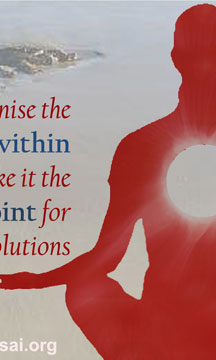 |
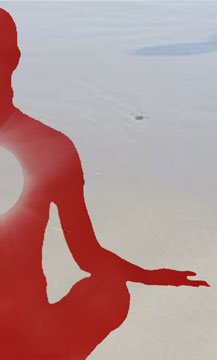 |
What I would like to say is that we must boldly recognise the latent goodness of humans and make it the real starting point for finding solutions.
Swami tells us repeatedly that we all are, without any exception whatsoever, sparks of the Divine and that God is latent in each and every one of us. God is Love and Love is God, which means that pure and unselfish Love is also latent in us.
Further, since God is infinite, Pure Love also is, both in extent and in its power. However, this infinite reservoir with literally infinite power packed in it, while latent in each individual, is not readily available. Man must make a special effort to plug into it, and if he does so, then the impossible becomes possible – that is the essence of my point.
Divine Proclamation Inaugurates Hospital, Currency of Pure Love Sustains it
On the morning of November 23, 1990, during His birthday discourse, Swami announced that exactly one year from that day, a Super Speciality Hospital would start functioning in Puttaparthi that would offer advanced medical treatment absolutely free, to everyone who comes, irrespective of caste, creed, race, religion or economic background. People wondered: “How is this possible? Such a thing is not possible even in the richest country. No charitable organisation has ever done this; how can Baba do this and that too in a village in the Third World?” A few others said, “Oh, Baba may get a hospital going but it would fold up quickly; it simply is not possible to keep it going in a village. Does He know what it takes to run a hospital that offers tertiary care?”
 |
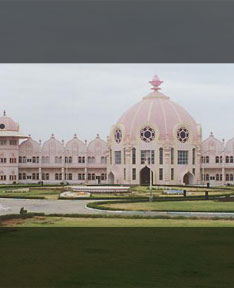 |
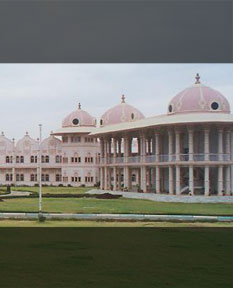 |
Sri Sathya Sai Institute of Higher Medical Sciences, Prashanti Nilayam, Puttaparthy |
||
Yet construction did start but it also faltered badly, moving in fits and starts. Dr. Safaya was in charge of the hospital project. He is a man of much experience, having run the All Institute of Medical Sciences in New Delhi for 18 years. This is no ordinary hospital; it is a premier hospital with international reputation and has over a couple of dozen specialities. All our Presidents and Prime Ministers go there for treatment, if they fall sick. This same Dr. Safaya, with so much top-class experience, was now in charge of launching Swami’s hospital.
Anxiety and Panic Precede Inauguration
 |
|
Swami on the Inauguration day of the Super Speciality Hospital, Puttaparthi |
The day is November 18, 1991; four more days to D-Day, November 22, that is to say for the hospital to be inaugurated by the then Prime Minister of India, the late Mr. P. V. Narasimha Rao. It was to be no ordinary inauguration; the opening would be celebrated not with speeches but a villager undergoing heart surgery! It had never happened before, much less in a village in a Third World country; and yet, that was what Swami had willed. But what was the scene on the ground? As late as November 18, things were far from ready; a top class hospital means so many things must be in perfect shape; and heart surgery? That alone calls for so many extras; the theatre must not only be ready but completely sterile to international standards; besides, so many support services must be in readiness but hardly anything was.
Dr. Safaya goes home late at night on November 18. He is dazed and feels absolutely depressed; utterly lost, he drops into his bed, sobbing; his wife is taken aback and asks what is the matter. Dr. Safaya says, “I have failed my Master; I cannot stay here anymore; I must quietly pack up and leave. I think we had better make preparations.” Mrs. Safaya is made of sterner stuff and she replies, “Baba has made this Sankalpa or resolve; He is God; this Hospital WILL start functioning at the appointed hour; have no doubt; catch a few hours sleep now and go back to work early tomorrow morning. Everything will be OK.” Dr. Safaya was so much down, he had very little energy to even protest; he just sank into the bed.
Next morning, Dr. Safaya goes for work, and finds there is a sea change; suddenly and most miraculously, things have started falling into place; oh yes, they were not perfect but that part needed to get the surgery done 22nd morning was perfect. Things moved in a blur, and presto, on the morning of November 22, the Hospital WAS blessed and the surgeon’s knife did touch the patient’s skin, exactly as Swami had willed earlier, one year in advance in fact. How do I know all this? Firstly, I was there on the morning of November 22 1991 but I must confess that at that time, I was not aware of this high drama. However, later I heard all about it, and in fact, many of you might even have heard the broadcast of my conversation with Dr. Safaya during which he gives a blow-by-blow account of these historic events. Just to complete that story, I might add that the hospital did not fold up as many predicted it would. Instead, it has not only functioned most successfully for almost twenty years but also set all kinds of world records, making medical history regularly, some of which has been chronicled in reputed International publications.
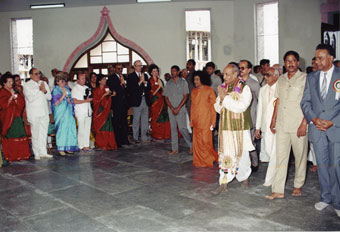 |
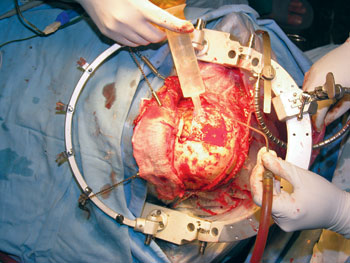 |
|
The then Prime Minister of India, the late Mr. P. V. Narasimha Rao with Swami on the Inauguration Day of the Hospital |
Scene of an operation being performed at the Sri Sathya Sai Super Speciality Hospital |
Some might shake their heads and dismiss this accomplishment saying, “All this is wonderful no doubt but you seem to forget that Swami is God and what He wills is bound to happen for sure.” Indeed, but are we not forgetting what Swami often tells us namely that we too are God? The problem, as Swami reminds us again and again, is that we fail to recognise the Divinity latent within us, and the enormous power it helps us to plug into.
Sailutions to World Crisis
We earnestly need to reflect intensely on two things:
 |
 |
 |
- the problems that humanity is currently facing
- the way out via Swami’s teachings
Each time anyone plays the “Swami is God” card and dismisses the hospital story as an isolated example, they forget a pertinent fact that Swami consistently tells us about our reality, that we are also God.
God’s Love versus His Miracles
Some sceptics might counter that with a wry smile, adding, “Come on, be serious! Can you wave your hands and create vibhuti, for example?” That is the usual counter objection that is offered, and seems a convenient escape alley. However, I ask you: “Is God represented by His miracles or His Love? Has not Swami told us so many times that His Love is far more important compared to the miracles that we all seem to adore and are locked on to totally? Has not Swami assured us that the same Infinite Love is also latent within us?”
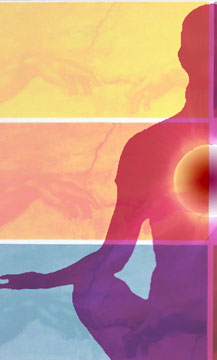 |
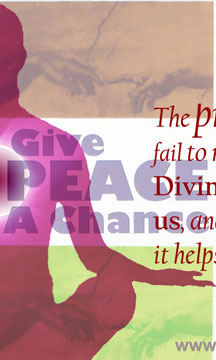 |
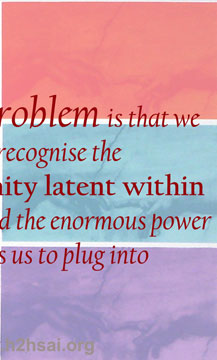 |
Giving Pure Love a Fair Chance
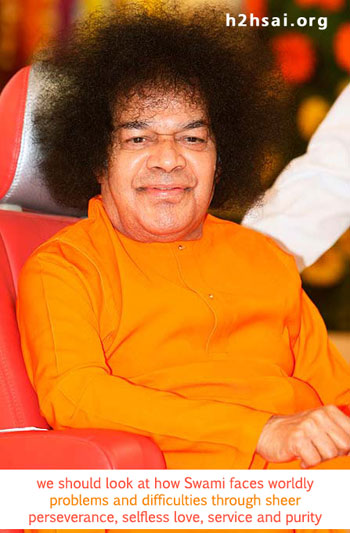 |
It is time for all of us to take Pure Love far more seriously than we seem to. We appear to think that Pure Love is something that is relevant only to Swami but not to us. This is not true. Just consider this: Swami has performed so many incredible miracles, especially in the Paatha Mandiram (Old Mandir) days, that is, between 1940 and 1950. And yet, that same Swami who took on a devotee’s paralytic attack and subsequently cured Himself, has recently gone through four fractures – not one but four, two in the same leg and two in the same hand. He can easily cure Himself, but He does not. Why?
During the execution of the Anantapur Drinking Water Project, there was a time when there was acute money shortage. Do you know what Swami did then? He mortgaged some of the property of the Central Trust to raise cash. Can God ever run out of wealth?
Sai Mission Propelled By Pure Love, Not His Miracles
He stresses that when God comes in human form, He will act human most of the time, including by facing financial pinch, suffering fractures and what not. What I am driving at is that instead of taking refuge under the miracle alibi, we should rather look at how Swami faces worldly problems and difficulties through sheer perseverance and of course selfless love, service and purity.
Transformation of Puttaparthi Bears Testimony to the Power of Love and Perseverance
Reflect on this. Do you know how backward Puttaparthi was way back in 1940 when Swami left school to serve humanity? There was not even a road leading to Puttaparthi at that time. To come here, you had to first make your way somehow to the village Karnatakanagepalli across the road and then walk across River Chitravathi. Look around Puttaparthi today; after doing that, take walk across the river to Karnatakanagepalli; if you don’t like walking, you can now drive down along a causeway. You will see what an enormous difference there is between the two places I am mentioning. Indeed since 1990, there has been a sea change in Puttaparthi – so many cars, high rise buildings, electronic banking, ATMs, shopping bazaars, internet cafes, etc.
Uplift Stemmed at Source, Not by Force
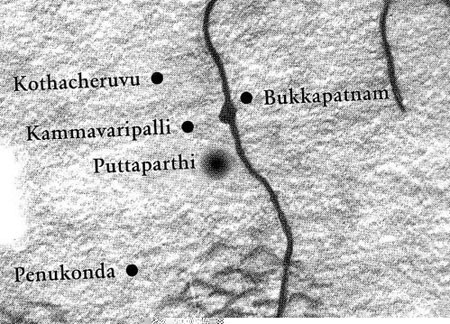 |
People in India are all the time talking about rural development. How did this miraculous change occur here? Did Swami get involved in it? Did He persuade the government to do something or did He take a loan from the World Bank? He did not do anything of that sort; seemingly, it sort of happened all by itself.
What was actually responsible was Swami’s Love that drew people from all over the world making this town the Spiritual Capital of the world, nay the universe. That in turn, produced its own spiritual chemistry which then had a dominos effect upon all other human endeavours and pursuits. The core force came from the source within, namely pure love. We cannot therefore underestimate or dismiss the power of love in its most organic, universal and unconditional form.
Hope, Optimism, Confidence Necessary for Safeguarding Collective Futures
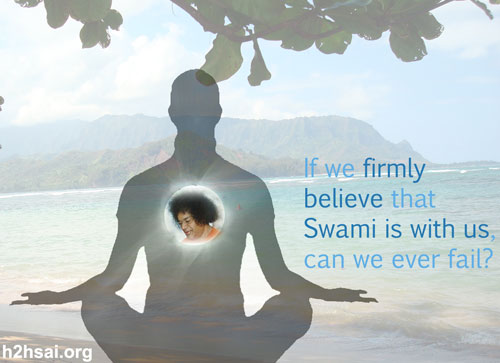 |
If there ever was a moment in history which was not the time for doubt, hesitation, cynicism or a sense of despair, it is now, especially for those of us who live in the awareness of Swami’s presence and mission on earth. The rest of humanity, scholars and politicians included, can succumb to doubts and despair if it wants to, but we should not sink with them. If we firmly believe that Swami is with us, can we ever fail? Let us all banish that doubt, and take a bold step forward for our beloved Sai, our beautiful Swami.
Is it not time we start really doing something for Him instead of just offering trinkets? Why fear we would not succeed when He is here and has also given us the assurance that He would be with us all the way? All that is required is for us to dare, and take one step forward in the right direction. The world is anxiously waiting and we should not fail it! God is here to nudge us and indeed He is doing it constantly. It is time for us to respond and take a bold step forward!
Jai Sai Ram.
Dear Reader, did this article help you in anyway? Please share your feelings with us by writing to h2h@radiosai.org mentioning your name and country. Thank you for your time.





